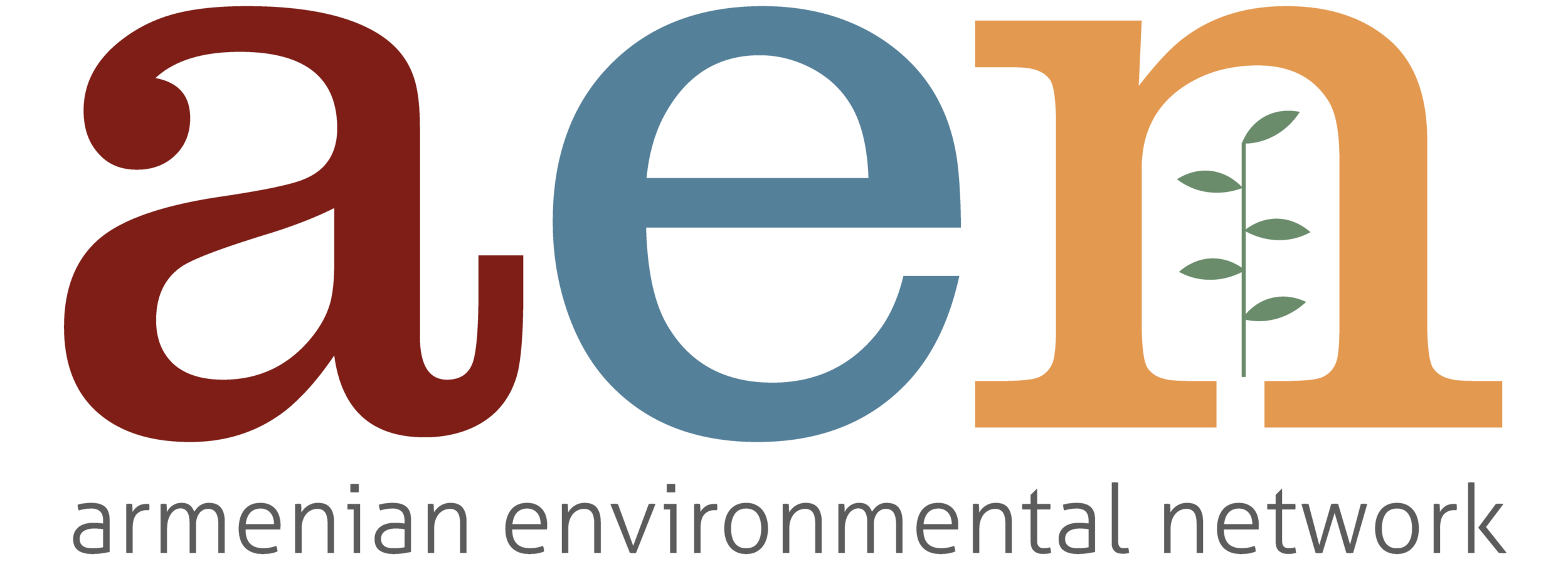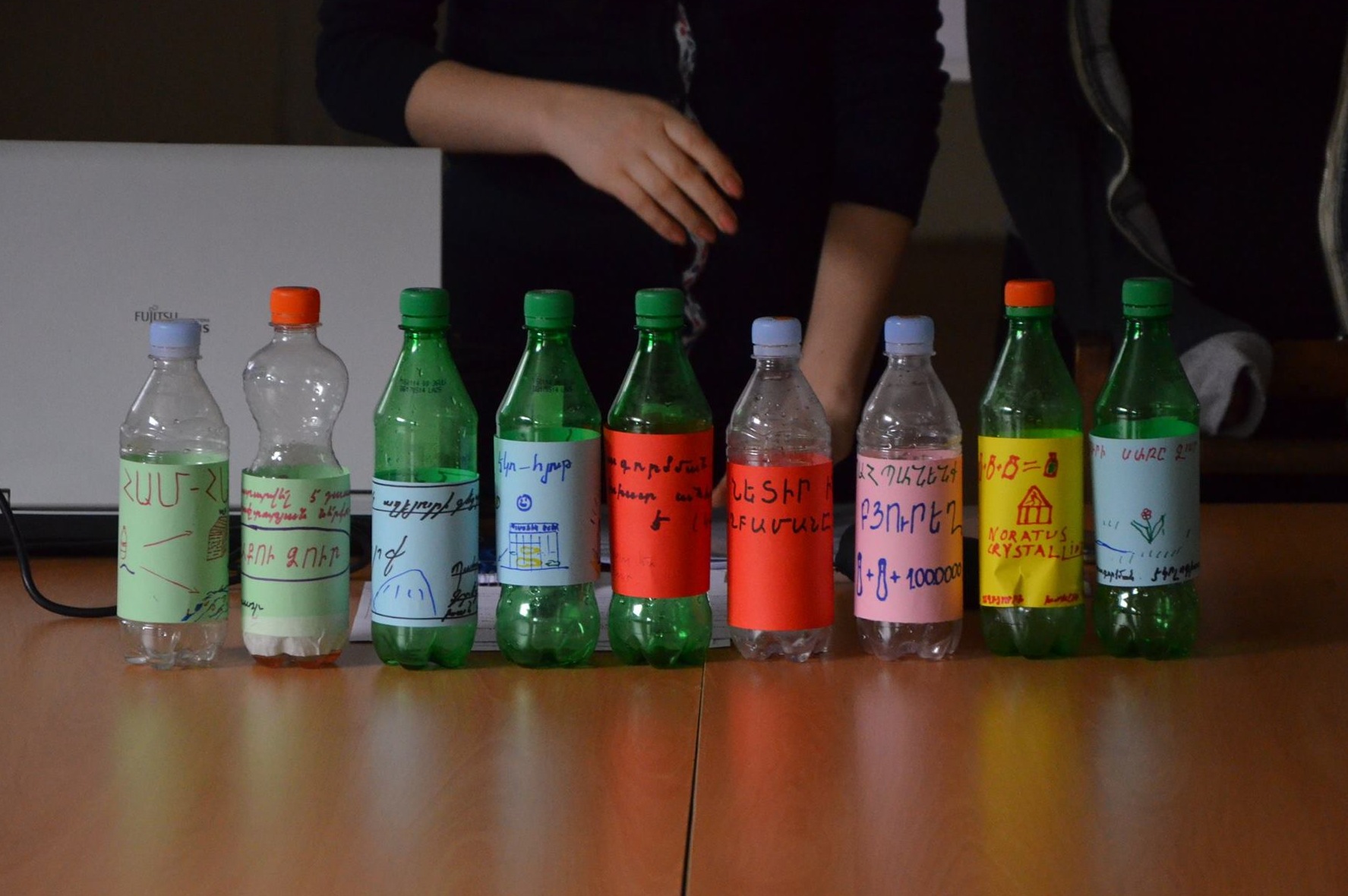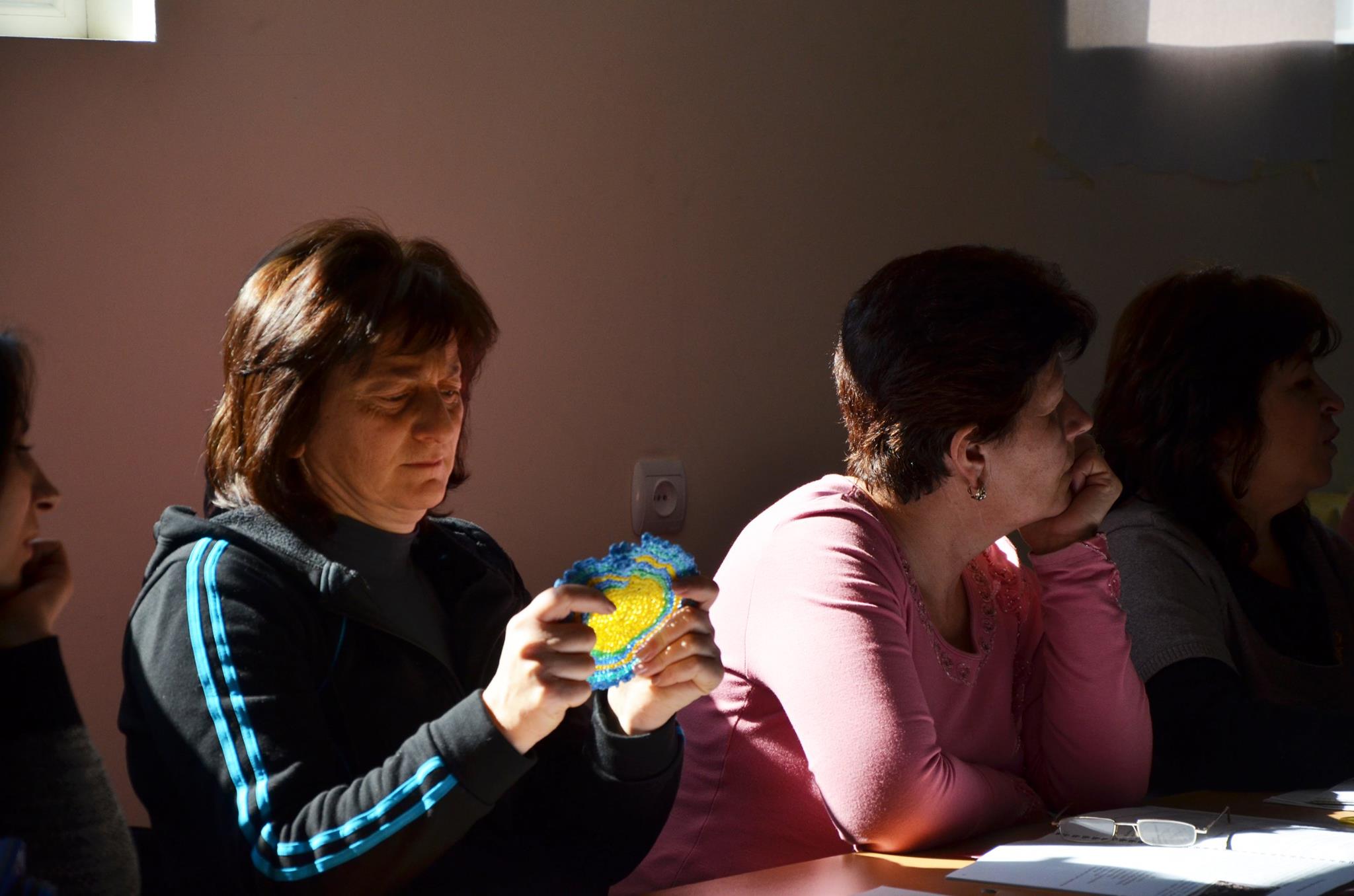A Day in the Life of an AEN volunteer
by AEN volunteers Alison Hamlin and Alina Aslanian
In mid-February, the Armenian Environmental Network, along with the “Graduate Association of Yerevan State Linguistic University after Brusov” NGO and “Ayrudzy” NGO, met with the teachers from the Vardenis sub-region in Tsaghkadzor for its second Training of Teachers (ToT). During the training, AEN introduced the second half of its environmental and waste management curriculum. As AEN volunteers experiencing the second ToT, it was interesting for us to hear about the teachers’ experiences in the classroom after implementing the first half of the curriculum, and their reactions to the new material.
The first day of the ToT began with an icebreaker activity called Noah’s Ark, an energizer activity that promotes critical thinking. In this game all of the teachers received an identity and were asked to choose which five people (from a group of ten) should be saved from the flood and given a place on Noah’s Ark. We were surprised at the amount of passion and enthusiasm the teachers brought to this activity as they argued their points, and it was a harbinger of their attitudes to come throughout the training.
Much of the material discussed on the first day was focused on getting the teachers familiar with the teaching methodology called Bloom’s Taxonomy. The taxonomy suggests that learning goes beyond simply remembering or understanding. In order for a student to reach a high level of comprehension, they must apply their knowledge, as well as use what they’ve learned to analyze, evaluate, and create. Most Armenian classrooms use a teaching system based heavily on memorization. We know this undermines students’ actual understanding, while limiting creativity and critical thinking, so part of AEN’s waste management curriculum is focused on addressing this weakness. The teachers were very positive when asked to report on their experience implementing the new methods they learned from the last ToT that took place in late October 2013. One teacher shared that one of her students had been very sad and quiet in class after the death of a close family member, but when the teacher started using the Socratic Method, another teaching method that promotes critical thinking, this student suddenly started talking again and became eager to participate. Overall, the teachers agreed that they would use the new method not only during AEN’s waste management lessons, but in other classes as well.
Observing the ToT, it was fascinating to watch the teachers take on the role of students. In one activity used to foster creativity and critical thinking skills, teachers participated in a mock press conference. By practicing activities like this at the ToT, AEN hopes that the teachers will use these activities in their own classrooms. During this exercise, two teachers were given news articles on a particular topic and the others were instructed to ask questions in order to learn about the story. They were told to raise their hands and ask questions one at a time. It was interesting to watch some of the teachers struggle to wait until they were called on, as they were eager to participate.
The second day of the ToT was concentrated on recycling, reusing and composting. The ice-breaker activity for the day was to come up with creative advertisements to put on plastic water bottles with the aim of making consumers more conscious of reusing and recycling. It was interesting to see the unique ways in which the teachers advertised and decorated their bottles. Each teacher shared their creation and the AEN presenters chose three winners. The winning bottles were those that would
make it most appealing for the buyer to reuse or recycle. One of the winning bottles was an advertisement for a fictional product called “Eco-Juice,” a brand of juice that reuses their old bottles and asks its customers not to burn the plastic bottle after drinking the juice. We like that this advertisement had a big X over a picture of bottle burning, something that is very common in Armenian regions. Most Armenians do not separate their plastic bottles from the rest of their trash, and there are very few facilities that recycle plastic.
After the ice-breaker, the teachers were introduced to recycling, reusing and composting – what it is, how to do it, and the importance of doing it. The teachers were told that plastic and paper should be recycled separately, and that composting makes a great natural fertilizer. Then, each teacher shared what kinds of waste they had collected the previous week and how they disposed of it. At the end of the lesson, they were shown unique ways they can create new things from materials they are throwing away. Examples included making a wallet out of a juice carton, creating a bag from an old T-shirt, and converting old CDs into ornaments. The teachers thought the items were creative and also simple enough to do with their students. They seemed eager to try these activities with their students, and they commented on ways they would add their own twists.
A teacher observes a reused item made from cassette tape
Later in the day, AEN was joined by EcoLab representatives, Samvel Kirakosyan and Anna Mkrtchyan. Ecolab is an initiative of the Joint Civic Education program in Armenia. The group supports young environmental activists in designing and implementing environmental projects in their communities. Samvel was part of Eco Bus in Vanadzor, and Anna was part of EcoBus Stop in Armavir. They showed the teachers photographs and videos of their repurposed bus and bus stop made from plastic bottles. Samvel’s presentation of Eco Bus showed the teachers how young people took a broken down bus and transformed it into a community center. This is something very significant for a city like Vanadzor, because it shows purpose in reusing to the community, and it attracts young children, as it became a fun community center. Anna’s presentation of Eco Bus Stop demonstrated how a group of young people took action and created a community bus stop made out of plastic bottles. Samvel and Anna hoped to inspire the teachers to come up with other ways to reuse and recycle, especially in ways that will inspire their local communities to do the same. We think that the teachers felt inspired, because they wanted to learn a lot more about recycling.
Due to their eagerness to learn more, aspontaneous field trip was planned after the ToT, where we visited a recycling facility near Abovyan. The field trip was fun for both teachers and AEN staff, as we all got to observe glass blowers making beautiful, functional pieces out of recycled glass bottles.
As volunteers from the U.S., one of the most interesting parts about working with these teachers was realizing the extent of their connections to the materials in the teacher’s guide through their own life experiences. For example, if an average American student from a suburban town were told by a teacher that cows are herbivores, that student would likely accept it as a fact. When one of the teachers told his classroom that cows are herbivores, many students debated with the teacher because they’ve grown up with cows right in their backyards. One student said that his cow likes to eat plastic, and another said that his grandfather had found a shoe sole in his cow’s stomach. It shows that the teachers, and the teachers’ students, are connected to what is being discussed in class in a very direct way. Students of this region know so much from being children of farmers, but they are also exposed to bad habits that may seem normal, like throwing a cigarette butt in the street or burning plastic. They might also see a cow eating plastic and think that it is normal, rather than a negative, unhealthy effect of littering. It is the goal of the AEN teacher’s guide to help connect the reality of life in present-day Armenia with a higher awareness of ecologically sound practices.
Alina Aslanian joined AEN in Armenia as a volunteer in Fall 2013, when she moved to Armenia to be a Birthright Armenia participant. Prior to volunteering in the Yerevan office, she volunteered with AEN’s San Francisco Chapter as a contributor to the newsletter. Alina received a B.A. in Spanish from University of California, Davis and is currently working on an M.A. in Philosophy at San Francisco State University.
Alison (Ali) Hamlin is currently a Birthright Armenia volunteer, working at AEN as well as the American University of Armenia. She graduated from the University of Rochester in 2013 with a B.S. in Chemistry. In the laboratory, Ali’s focus has been on sustainability and alternative energy. She has investigated the use of sunlight for hydrogen production and converting waste heat to usable energy. In 2012 Ali spent a semester in Nairobi, Kenya where she studied health and community development. There she completed an independent study project on the impacts of small-scale biogas digesters in rural areas. Ali is thrilled to be a part of AEN and to contribute to Armenia’s environmental future.
Group photo in front of the recycling factory with gifted recycled vessels







